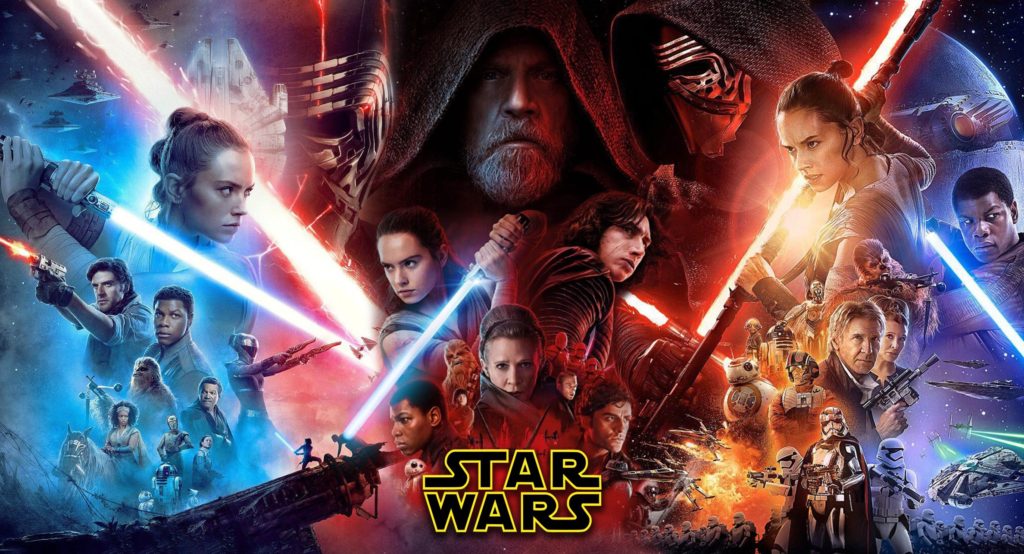
Credit: Reddit
WARNING: Star Wars spoilers ahead, especially with regard to the sequel trilogy.
If you’d told me back in 2009 that more people would be talking about the first season of a Star Wars TV series than Star Wars: Episode IX, I would have thought you crazy. How can anything be bigger than a flagship theatrical Star Wars movie that closes out the 40-year-old Skywalker saga?
And yet, here we are, talking more about Baby Yoda than the conclusion of the Rey-Kylo Ren story arc.
Sure, Episode IX has made tons of money, and sure, it has its fans, but taken as a whole Star Wars fandom seems to have met the end of the Disney-run sequel trilogy with a collective meh. Almost no one I know likes all three films: they either view Episode IX as 1) a redemption of a failed VIII, 2) a lackluster followup to a genius VIII, or 3) “who cares, because it all pretty much was trash.” I doubt many fans think this film trilogy belongs in any top-ranked list of film trilogies.
How did we get here? How did a movie trilogy with so many resources at its disposal turn out like this?
A lot of people seem apt to blame the usual suspects. J.J. Abrams can’t direct. Kathleen Kennedy can’t run Lucasfilm. Star Wars fans are toxic. Fans are suffering from Star Wars fatigue. Disney destroys everything.
Those are all convenient scapegoats, and perhaps there is at least a kernel of truth to all of them. The company and those involved with the trilogy have to own the shortcomings, and the fandom certainly expected the moon, especially after the disappointments of George Lucas’s prequel trilogy.
At the same time, all of those arguments have problems, too. J.J. Abrams (Lost, Super 8) and Kathleen Kennedy (E.T., Jurassic Park) have both shown that they’re capable of doing good work. Star Wars fans do have sky-high expectations, but we’ve seen those expectations met with other Star Wars properties, including The Mandalorian (which, I would point out, happened under Kennedy’s watch), Rogue One, and — at least in my opinion — Solo. And Disney has done a phenomenal job with the Marvel Cinematic Universe, whose fans are at least as demanding as those who care about Star Wars.
Instead, I think a more fundamental part of the story is a narrative and logistical one. Namely, the Star Wars sequel trilogy tried to do something so difficult it is rarely attempted in film, and it by and large failed because it approached the exercise in a way that made it extremely difficult, if not impossible, for it to succeed.
The Truth About Trilogies
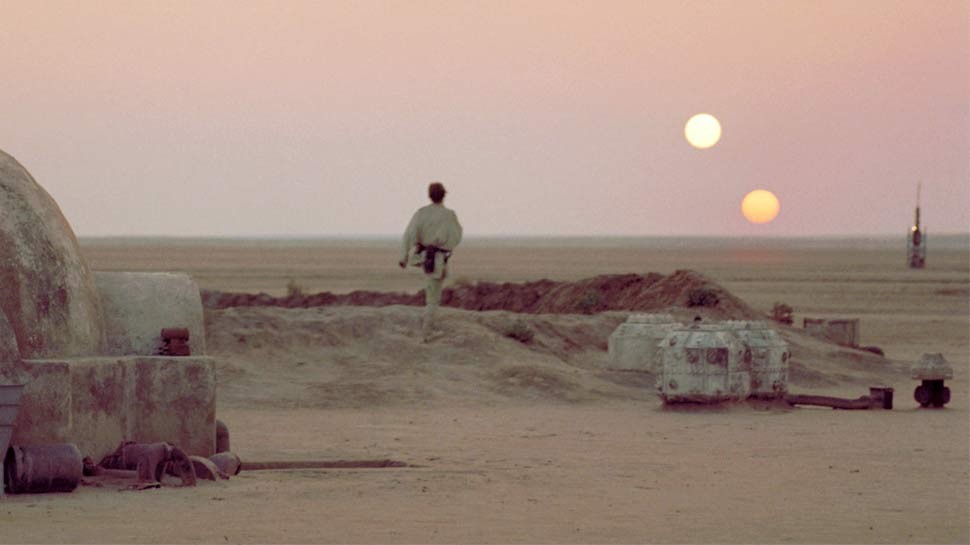
Nerds love trilogies. Star Wars. Lord of the Rings. Back to the Future. The Godfather. The Matrix. Heck, while we’re at it we could throw video games like Mass Effect or the gaming adaptation of The Witcher into the mix. Fans even love trilogies within trilogies, which was a huge component of the now non-canon Star Wars Expanded Universe.
I draw a distinction, though, between film trilogies and three-movie story arcs. In film, a trilogy is a cluster of films, usually oriented around some common thread or threads. Those threads typically include common characters, but they also often take place in close chronological proximity to one another.
A three-movie story arc, meanwhile, is when three movies carry forward a cohesive, substantive narrative thread across three films. They tell an overarching story that starts in film 1 and ends in film 3.
I think it’s possible to have a trilogy that doesn’t necessarily have a three-movie story arc. Some beloved trilogies, like Toy Story, Indiana Jones, and the original Die Hard films, are essentially three standalone adventures with only loose narrative connections between them and no cliffhangers to speak of. It’s not a coincidence that all of these trilogies eventually led to more films, albeit of varying quality, because the standalone nature of the franchises makes that easier. You weren’t stretching out a story arc, after all.
I also think it’s possible to have a trilogy where two of the films — often films 2 and 3 — are tightly connected in such a way that it almost feels like a two-film story arc even within a trilogy. I think this is true of both of the preceding Star Wars trilogies.
With the prequel trilogy, I think you could make a strong case that Episodes II and III, which bracket the start and end of the Clone Wars, respectively, are more tightly woven together than Episode I. I’d go further and say that Episode I is by and large a throwaway film; with the exception of a couple of minor details, you could skip it entirely, start with Episode II, and mostly figure things out without too much trouble.
With the original trilogy, meanwhile, I think Episode IV by and large operates as a standalone film, other than a couple of loose ends (i.e. Darth Vader surviving) that the film doesn’t make much ado about. This was by design, as Lucas was not at all certain there would be future installments. As a result, Episodes V and VI are more tightly connected to one another, especially with the way events in the third act of V and its cliffhanger ending connect with the first act of VI. That’s not to say that IV is unimportant — it’s definitely more key than Episode I — but The Empire Strikes Back and Return of the Jedi feel a lot more contiguous than A New Hope and The Empire Strikes Back.
Before I go on, I’d note that the Marvel Cinematic Universe has enjoyed the success it has because it knows how — in the midst of overarching plotlines (Thanos) and various callbacks — to tightly weave certain films when it counts. The pinnacle of that is Avengers: Infinity War and Avengers: Endgame, a duology within the series that exemplifies the two-story film arc.
Three-Film Story Arcs are Hard
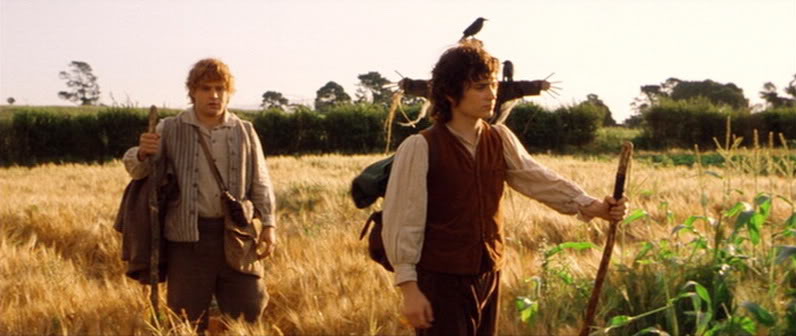
A few franchises have attempted full three-film story arcs, with an overarching plot that starts in film 1 and ends in film 3. You know when you’ve seen one, because you can stop at the end of film 3, look back over your shoulder, see film 1 off in the distance … and then boot up film 1 and, looking across the horizon, see where your path will take you into film 3. The films may have their own standalone moments, but they are all ultimately interdependent. In short, all three films are absolutely essential to the experience.
Lord of the Rings is, in my mind, the exemplar of this format. Benefitting from a robust source material, all three films are immaculately intertwined, from Frodo’s first steps out of the Shire to the final moments in Return of the King. While each has its own distinct moments–the bridge of Khazad-dûm, Helm’s Deep, the climactic moments above Mount Doom–the journey of the One Ring is the theme that draws it together.
I think Back to the Future mostly does this, too. The three films are tied together by cliffhangers that dovetail into one another, and Part II and Part III both tie back into their predecessors. The connection between I and II is particularly strong because the third act of II takes place in the same time period as Part I, but even Part III is well-connected: the beginning and end of III don’t make sense if you haven’t seen II.
It’s not easy to nail a three-film arc, and we’ve seen franchises fail at it. The first two films in the Godfather trilogy are seen as among the best films in all of cinema, but for various reasons the third film failed to close things out at the same level. The first Matrix is a stellar achievement, but the second film was a disappointment and the third film only marginally better. And then there is the Hobbit, a trilogy that probably could have been done in two films and been better for it.
Deconstructing the Disney Trilogy
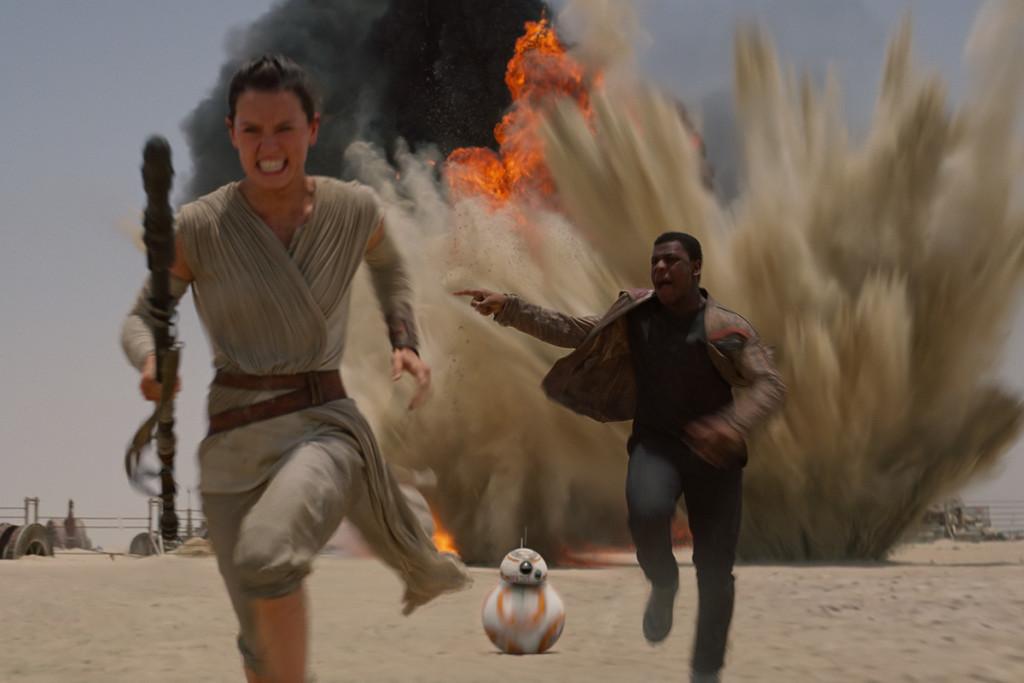
I argued earlier that the other Star Wars trilogies, to date, have ended up being closer to two-film story arcs, with a throwaway Episode I and a more standalone Episode IV. I don’t think that’s what the Disney-era Lucasfilm was aiming for.
In my mind, it was clear from the very beginning that Episodes VII, VIII, and IX were intended to be a seamless, cohesive, three-film story arc. The proof, I think, is in the two cliffhanger endings: Rey holding the lightsaber out to Luke at the end of The Force Awakens, and the young child using the Force at the end of The Last Jedi. There are no standalones here.
Consider the gravity of that. It means Abrams was trying to accomplish something even George Lucas hadn’t done.
It’s a tall task, and, as we’ve seen time and time again, it can fail even when you have the same group of people with a common vision. When you have different people with differing visions trying to create a three-story arc, it’s going to be difficult, perhaps even impossible, to create anything cohesive.
And yet, for reasons I can’t fathom, that’s exactly what happened. In something straight out of a middle school game where kids take turns writing sentences to the same story, Episodes VII, VII, and IX weren’t written by a common group of writers. Each film had a different pen. That was by design, and it doesn’t even take into account the ridiculously complicated politics that splintered the process even further than was originally intended.
I’ve read conflicting reports on how much conversation went on between J.J. Abrams — who was a major force in writing VII and IX — and Rian Johnson — who was the primary writer for VIII — but all you have to do is watch the movies to see the disconnect.
Episode VII trots out a number of unsolved mysteries, probably more than any other Star Wars film. Who is Rey, and who are her parents? Who is Finn, and what is his family? Who is Snoke? Who are the Knights of Ren? And what happened to Luke?
Few people will disagree that when Rian Johnson wrote Episode VIII, he decided to be subversive with pretty much all of those mysteries, taking most of Abrams’s set pieces and tossing them in a directions no one expected. Rey turns out to be a nobody, with nobody parents. Finn barely matters, and is instead sent off on a side plot to kindle a romance with Rose Tico. Snoke dies unceremoniously two-thirds of the way through the film so that Kylo Ren can ascend to become the primary antagonist. The Knights of Ren are not mentioned. And Luke (much to the consternation of Mark Hamill) becomes a jaded, disillusioned, hermit who initially lies to Rey about what happened between him and Kylo Ren. Meanwhile, the movie ends with a child using the Force, symbolizing the future of the Jedi.
Some fans loved the subversion. Others hated it. I’ll get back to that in a moment.
When J.J. Abrams returned to write Episode IX, he was at least as subversive as Rian Johnson had been, taking all of Johnson’s set pieces and returning the favor. Turns out Rey isn’t a nobody after all; she’s Palpatine’s granddaughter. Finn now is a co-leader of the Resistance … oh, and by the way, that romance with Rose Tico pretty much never happened. Snoke is a clone, created by Palpatine … who is suddenly the primary antagonist, with Kylo Ren on his way to redemption. Luke is a wise Force ghost. And hey, there are the Knights of Ren … but there’s no sign of the little Force-wielding child.
Some fans loved how Abrams “salvaged” the trilogy. Others thought it was bland.
A Lack of Vision
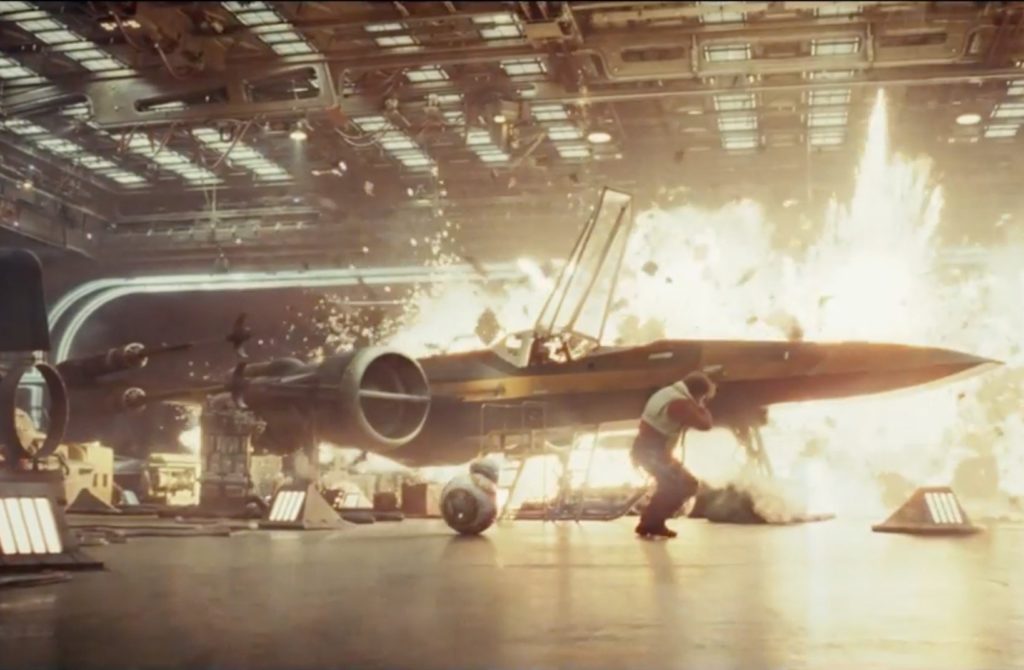
So much has been said about whether the individual movies were good or bad — especially the huge divide over The Last Jedi. To me, that’s not the real issue. The issue is the fact that there wasn’t a common vision across the three films.
As best as I can tell, one of two things happened. Either Rian Johnson and J.J. Abrams agreed to take turns being subversive just to throw audiences for a loop, or the two pulled the franchise back and forth in different directions based on their own interpretation of what ought to be.
It almost doesn’t matter which it was, because the end product just didn’t work. They don’t feel like complete parts of a trilogy. They feel like a Frankenstein of a trilogy.
I’m not attacking subversion, mind you. Subversion, done right, can work in film. In fact, we’ve seen it in past Star Wars installments.
The subject of Luke’s identity in the original trilogy was one of the more subversive moments in all of cinema. In Episode IV, Obi-Wan said that Vader killed Luke’s father, and in Episode V, Vader announced that he was Luke’s father. It was at once a shock but also very risky, because audiences (and probably Lucas himself) didn’t see it coming. In my view, what makes the whole thing work is isn’t A New Hope or The Empire Strikes Back … it’s Return of the Jedi, where Luke confronts Obi-Wan’s Force ghost and Obi-Wan explains why he said what he did. In that moment, Luke is all of us, in disbelief at the disconnect, but Obi-Wan gives a carefully crafted explanation, and Luke accepts it. That little scene does a lot to make the about-face on Luke’s identity plausible.
See what happened there? Across a two-film arc — The Empire Strikes Back and Return of the Jedi — we get both a reveal of a subversion and then an explanation from the original source as to why he said what he said. It worked.
I don’t see much evidence of a long game with regard to subversions in the sequel trilogy. All too often, things fall out of the sky (Vice Admiral Holdo, Palpatine) or disappear into the ether (Knights of Ren, Finn-Rose romance). The former is particularly problematic, because it feels contrived.
Take Palpatine. In the opening crawl of Episode IX (notwithstanding the reveals in the The Rise of Skywalker‘s trailers, who drops a plot bomb in the opening crawl?), we learn that Palpatine is back, and within the first 10 minutes of the film find out he’s been pulling the strings for the first two films. Even if we grant that this was Abrams’s intention all along (I don’t believe it), it’s poorly executed. How easy would it have been for someone in The Force Awakens or The Last Jedi — Luke, Leia, Kylo, even Snoke — to hint that Snoke was just a puppet, and / or that there was a larger sinister force at work in the Unknown Regions?
That didn’t happen, though, because I strongly suspect that Rian Johnson had no idea that J.J. Abrams intended to bring Palaptine into the mix, much less make him Rey’s grandfather. Johnson’s own words indicate that he believed Rey to be the child of a nobody. He conceded that Abrams might shift things in the last film, but I think it was very clear who Johnson felt Rey ought to be.
What Could Have Been
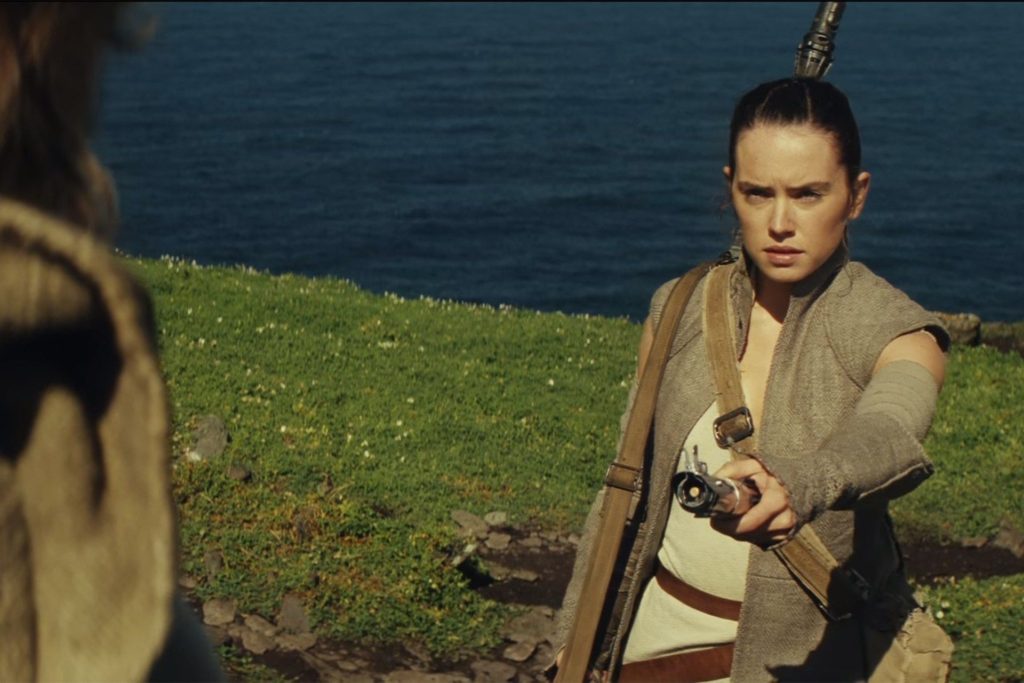
If Rian Johnson had written all three films, Episode VIII might have worked better. It likely would have felt less disconnected from the films it’s sandwiched between. Alternatively, If J.J. Abrams had written all three films, Episode IX wouldn’t have felt like a retconning of everything that had happened with Episode VII, and IX might have felt better paced and less overstuffed.
I’d go a step further: if one person had written Episode VII and another had written VIII and IX, it still would have been better. As I said earlier, a cohesive two-story film arc can work just fine.
But having one person write the first and last parts of the trilogy and someone else write the middle part — and with little evidence of narrative consensus between the two — was a recipe for what we got, which was a trilogy that didn’t seem to know what it wanted or where it was going.




Your conclusion that if only one writer had done VII, then the other VIII and IX is very cool based on your analysis of the other two SW sequels.
My favorite line though: “In something straight out of a middle school game where kids take turns writing sentences to the same story, Episodes VII, VII, and IX weren’t written by a common group of writers. Brilliant!
Thanks!
Excellent thoughts, Josh. I mean, it doesn’t make me feel any better about the films, but good insights nonetheless and hopefully a lesson that future filmmakers will also glean from the movies and take to heart. 😉